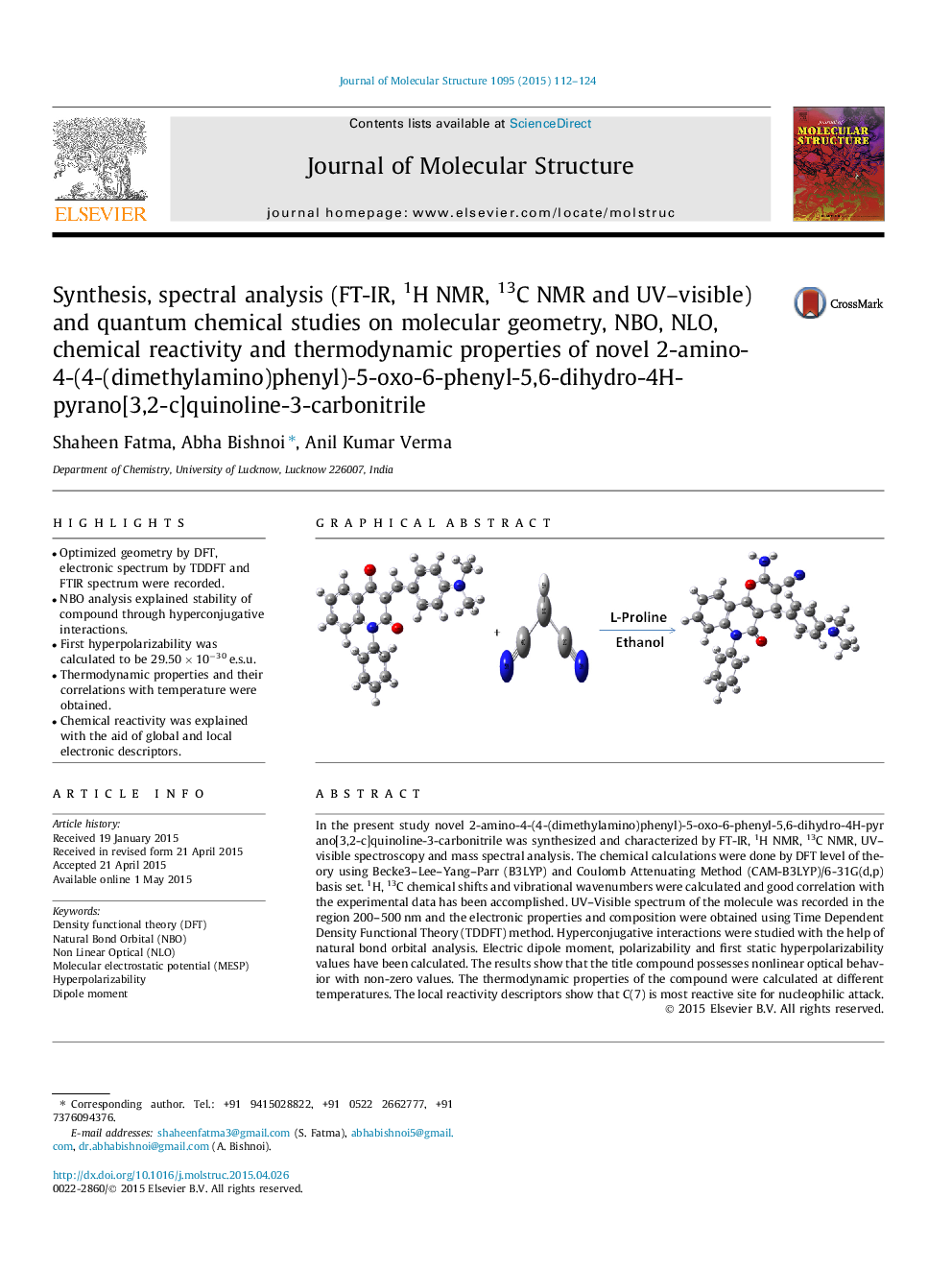| Article ID | Journal | Published Year | Pages | File Type |
|---|---|---|---|---|
| 1404837 | Journal of Molecular Structure | 2015 | 13 Pages |
•Optimized geometry by DFT, electronic spectrum by TDDFT and FTIR spectrum were recorded.•NBO analysis explained stability of compound through hyperconjugative interactions.•First hyperpolarizability was calculated to be 29.50 × 10−30 e.s.u.•Thermodynamic properties and their correlations with temperature were obtained.•Chemical reactivity was explained with the aid of global and local electronic descriptors.
In the present study novel 2-amino-4-(4-(dimethylamino)phenyl)-5-oxo-6-phenyl-5,6-dihydro-4H-pyrano[3,2-c]quinoline-3-carbonitrile was synthesized and characterized by FT-IR, 1H NMR, 13C NMR, UV–visible spectroscopy and mass spectral analysis. The chemical calculations were done by DFT level of theory using Becke3–Lee–Yang–Parr (B3LYP) and Coulomb Attenuating Method (CAM-B3LYP)/6-31G(d,p) basis set. 1H, 13C chemical shifts and vibrational wavenumbers were calculated and good correlation with the experimental data has been accomplished. UV–Visible spectrum of the molecule was recorded in the region 200–500 nm and the electronic properties and composition were obtained using Time Dependent Density Functional Theory (TDDFT) method. Hyperconjugative interactions were studied with the help of natural bond orbital analysis. Electric dipole moment, polarizability and first static hyperpolarizability values have been calculated. The results show that the title compound possesses nonlinear optical behavior with non-zero values. The thermodynamic properties of the compound were calculated at different temperatures. The local reactivity descriptors show that C(7) is most reactive site for nucleophilic attack.
Graphical abstractFigure optionsDownload full-size imageDownload as PowerPoint slide
